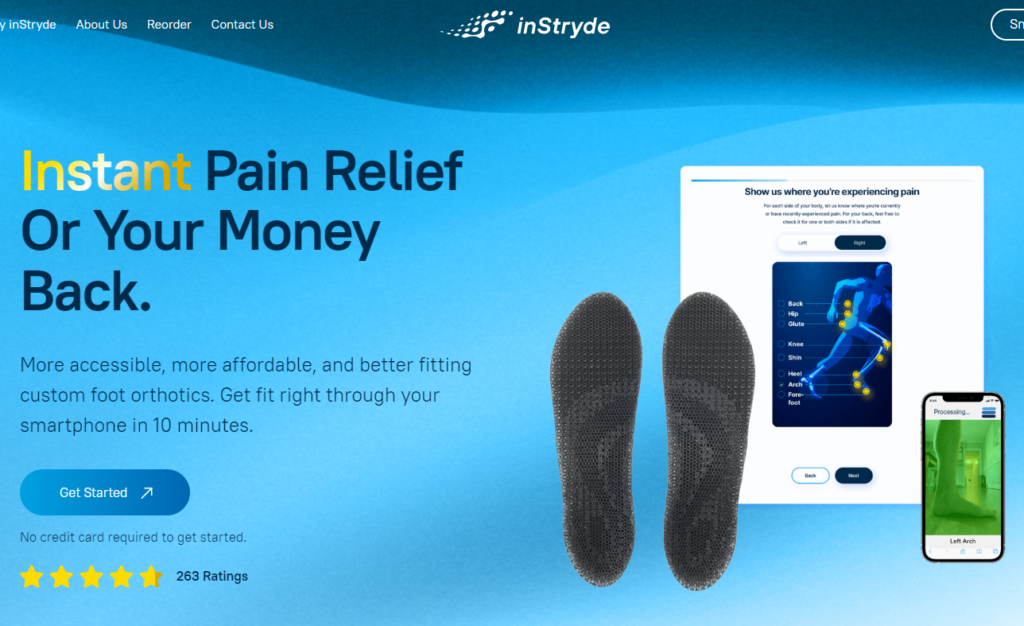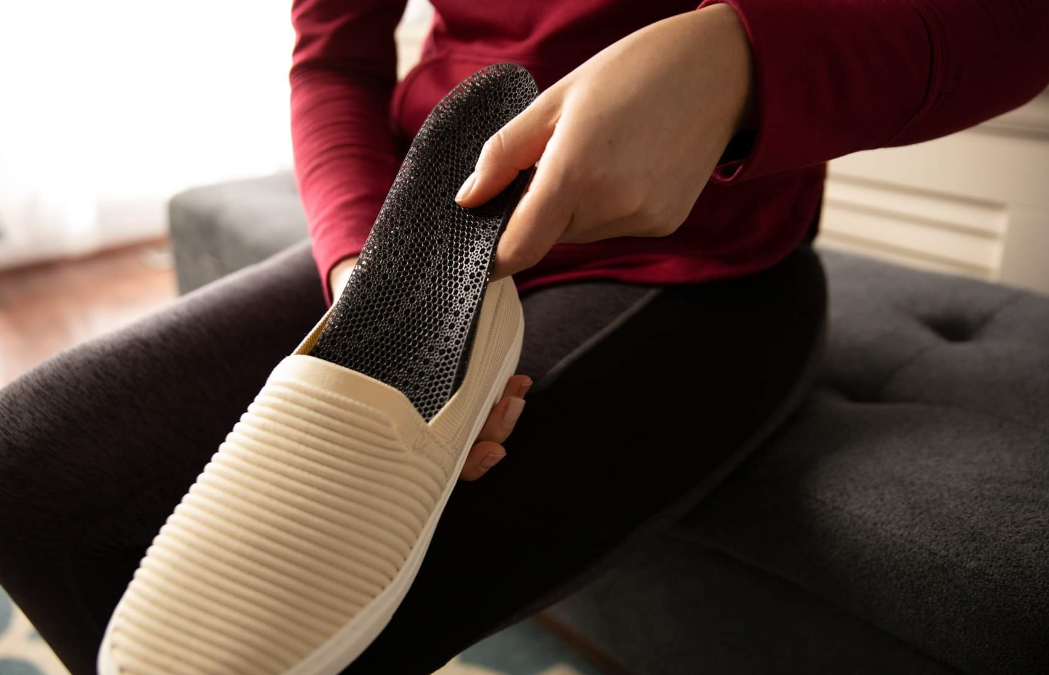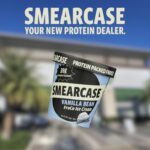I was introduced to Mike Schmid through a mutual friend, Stan Parker, who runs a startup incubator in Winston-Salem called Winston Starts. Mike Schmid is building a company called InStryde.
If The Shoe Fits
Mike’s company, InStryde, makes quality custom orthotics more affordable and better fitting.
Consumers have two basic choices if they have challenges like plantar fasciitis and other related foot issues.
- They can go to a retailer like Walgreens and buy a mass product like Superfeet or Dr.Scholls off the shelf. They are cheap, off-the-shelf, and readily available. Unfortunately, they wear out quickly and, most importantly, aren’t made for you. Superfeet might cost $59, and Dr.Scholls can run about $15. These aren’t excellent solutions for you if you have a specific problem.
- The other option is to go to a podiatrist, spend $600 and wait two months to get something made for your feet. These products are thick and don’t easily fit into athletic shoes like soccer cleats. Custom orthotics from a podiatrist will fit you but may not be a long-lasting solution because they are expensive and thick to achieve the compression profiles and support you need. What is typically done by a podiatrist is to layer different materials together, like cork or foam. It may be glued and layered and fit well – but its thickness rarely helps it fit in your shoes – like in low-profile cleats. To make them, they typically make a plaster cast of your feet to shape the orthotic. Some podiatrists use 3D scanners and some 3D printing but mostly a manual process.
InStyle – An Aerospace Engineer’s Approach
Mike Schmid had a personal experience with his feet. Specifically, he had plantar fasciitis in his right foot, an inflammation of a thick band of tissue that connects the heel bone to the toes. Symptoms include stabbing pain near the heel. Pain might be worst in the morning. Treatments include physical therapy, shoe inserts, steroid injections, and surgery.

He tried both solutions – like Dr. Scholl’s and the more expensive option from a podiatrist specialist. But the costly insoles wouldn’t fit in his soccer cleats, and, over time, the pain returned.
As a research and development engineer in the aerospace industry, Mike spent time working on projects like how to make seats lightweight and more comfortable. At Collins Aerospace and with other experience, I might investigate various new materials and technologies to solve the airline seat and cushion challenge.
Engineers looked at new materials and engineering approaches and found 3D elastomeric lattice structure – lightweight and porous but too expensive for a large product like a seat.
A Light Bulb Moment
Mike wondered if he could produce orthotics out of this material. Orthotics are faster and quicker to 3D print than bulky airplane seats– so it made sense, even three years ago. He could use one material, vary the density and create a customized, printable file. There would be no post-processing or gluing – keep the profile thin and fits in shoes.
His biggest challenge was getting measurements. How could he do this cost-effectively if he wanted to sell online?
Today you must go into a podiatrist’s office to get measured. He and his team developed software to 3D scan feet from a smartphone – create a file, and print the file. The result is fully customized, medical-grade orthotics.
Sole Food for The Feet
Now that his product is developed and successfully being used by consumers, today’s challenge is how to create a lead generation engine efficiently.
How can you get consumers interested in coming to his website and then going through the entire process? He and his partners are working on eliminating friction that makes it difficult and too many steps to place an order.
Mike simplifies the process and makes buying as easy as 1 and 2,3. The tricky part of filling the “top of the funnel” with interested consumers is getting people to make a purchase. He knows that the easier it is for someone to buy, the more his business will take off.
Four Marketing Lessons from InStryde
- Know the problem you are solving in the world – firsthand. By understanding the literal pain point he experienced, he could empathize with his customers. Mike isn’t theoretically trying to solve a problem – he is working on helping others who had a similiar experience.
- Eliminate friction in the process. Mike and his team are working on making buying easier. He tests several variables and workflows so a consumer can easily step through the process. He was wise not to worry about scaling early on and focused on getting customers the best experience possible.
- Thinking about LTV – The long-term value of a customer may factor into how Mike prices his product. Is he selling a product or a long-term solution? Should he consider a subscription versus a single sale? I like that he is open to how to serve his customers’ needs best. He is thinking about a range of pricing models and recognizes that he will keep learning as he hears directly from his core group of 100 early adopters.
- Avoids a scattershot approach – “You need to be hyperfocused and not all over the place.” Mike subscribes to my approach to keep getting narrower and narrower in who you target. You can’t be for everyone or you’ll be for no one.
Startups are often faced with so many challenges. But they must solve the problem immediately before them, one step at a time.
You can set up a time to chat with me about your marketing challenges using my calendar. Email me jeffslater@themarketingsage.com Call me. 919 720 0995. The conversation is free, and we can explore if working together makes sense. Watch a short video about working with me.





